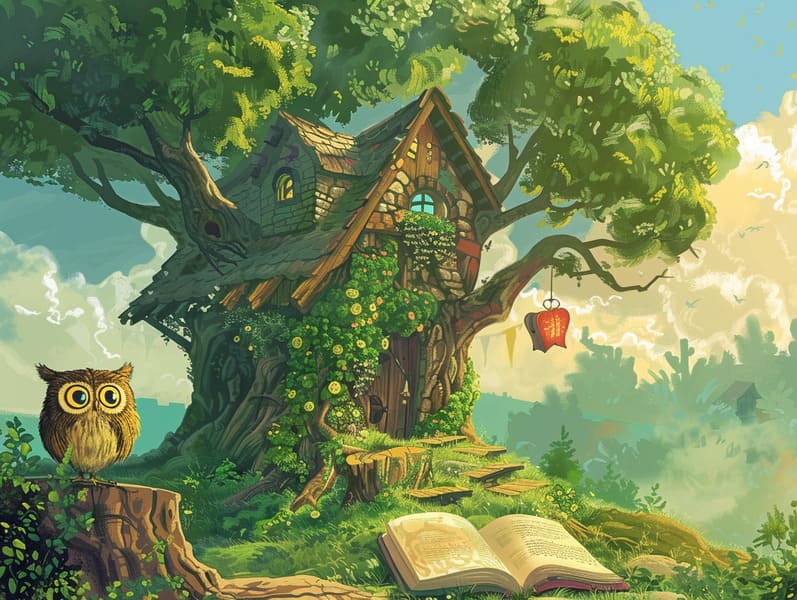Exploring the Roots of Children's Fairy Tales and Their Ageless Beauty.
Exploring the Roots of Children's Fairy Tales and Their Ageless Beauty.
Blog Article

Historical fairy tales have historical significance. These stories have been shared from one generation to the next centuries before they were ever written down. They sprang from a variety of traditions, including Indigenous traditions. They were initially told among adults, often carrying themes and messages aligned with the societal norms and beliefs of the time.
The Grimm brothers, Jacob and Wilhelm (the Grimm brothers), were among the first to collect and release many of these beloved fairy tales. Their anthology, "Grimm's Children's Stories," included tales like "Ashenputtel," "Hansel and Gretel," and "Little Snow White," which have since become pillars in the world of classic fairy tales. Similarly, Andersen's delightful stories, such as "The Mermaid's Tale," and "The Story of the Ugly Duckling," have touched hearts worldwide, securing their place in the pantheon of beloved fairy tales.
Though they are centuries old, fairy tales remain as meaningful as ever, especially as children's night stories. These fantastical tales are now available in different formats, including vibrantly illustrated books, fantastical animations, and internet fairy tales.
Their continued relevance can be attributed to several fascinating points:
Significant Morals: Old fairy tales often provide important moral lessons. Fairy tales like "The Shepherd Boy and the Wolf" teach the benefit of truthfulness, while "The Tortoise and the Hare" emphasize the values of tenacity and humility. These stories offer little ones clear distinctions between moral and immoral, helping to shape their moral compass in a soft yet meaningful way.
Empathy and Awareness: Timeless fairy tales frequently involve heroines facing challenges and problems, inciting readers to connect with their struggles and back their triumphs. For instance, "Beauty and Her Beast" emphasizes the significance of seeing beyond the surface to understand the true being of a person, nurturing perception and appreciation.
Cultural Recognition: Many traditional fairy tales are infused with the cultural contexts from which they blossomed. Immersing in these narratives can provide intriguing perspectives into different societies, cultivating a sense of global insight and understanding.
Creativity and Fantasy: The whimsical elements in timeless fairy tales—magical spells—fire up children’s visions. These fairy tales transport readers to fantasy realms, kindling fantasy ideas and a sense of curiosity that endures a lifetime.
Traditional fairy tales are not only alluring but also informative. They provide entrancing tools in developing various cognitive and emotional skills in kids. When classic fairy tales are voiced, they nurture verbal skills by bringing new lexicon and complicated sentence structures. This practice also advances auditory perception and attention span, as young readers listen intently, eager to see what happens next.
Furthermore, discussing the themes and characters of traditional fairy tales can advance problem-solving abilities and logical thinking. Kids learn to recognize patterns, anticipate outcomes, and grasp cause and effect. These explorations also aid the young convey their thoughts and feelings, strengthening their emotional intelligence.
In today’s modern era, the presence of digital fairy tales has made these fairy tales more within reach than ever. Web platforms and online apps extend huge assortments of traditional fairy tales that can be browsed or listened on anytime, anywhere. Fairy tales narrated are particularly widespread, providing an interactive method for the young to savor these charming stories. Read-aloud stories and read-to-me videos take characters and settings to life, often supported by charming background sounds and musical scores that heighten the narrative experience.
The everlasting appeal of classic fairy tales lies in their ability to shift to today's world while holding onto their key morals. Contemporary renditions of these fairy tales often bring in more varied characters and modern settings, making them relatable to today’s audience. However, the core values of valour, warmth, and equity remain unchanged, continuing to impact kids of all ages.
Old fairy tales also offer a sense of warmth and understanding. They bring a neat narrative with a distinct beginning, middle, and end, often drawing to a close with the finalization of conflicts and the triumph of good over evil. This steadiness can be placating for the young, imparting a sense of consistency in an constantly changing world.
Classic fairy tales continue to enthrall and enlighten new generations, maintaining their spell and meaningfulness in modern society. As kids' bedtime tales, they deliver up a perfect blend of wonder and wisdom, promoting moral values, empathy, and creativity. The presence of free fairy tales online and the popularity of fairy tales read out loud certify that these classic fairy tales remain acquirable to new generations.
By safeguarding and broadcasting these fairy tales, we continue to exalt the rich tapestry of fantasy and cultural heritage. Whether you are viewing a colorful picture book, experiencing a electronic library, or hearing an spoken story, the enchantment of bedtime check here fairy tales is always within reach. These narratives emphasize of the ageless spell of stories and its ability to connect us across generations and cultures.
Whether you are discovering a gorgeously illustrated book, accessing a internet library, or listening to an sound book, the magic of traditional fairy tales is always within reach.
These stories point out of the unfading magic of stories and its ability to bond us across epochs and places, casting a charm that charms and informs alike.